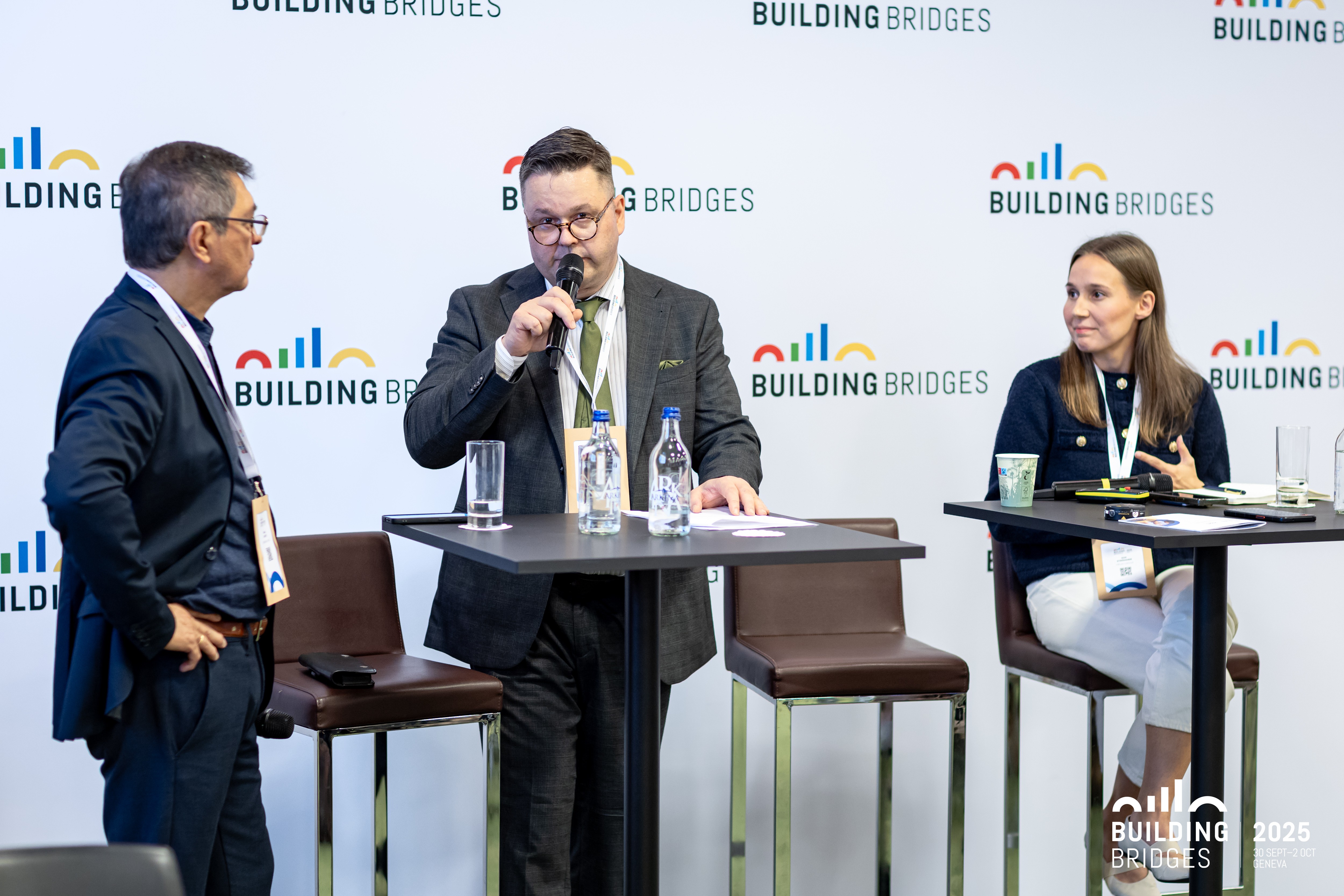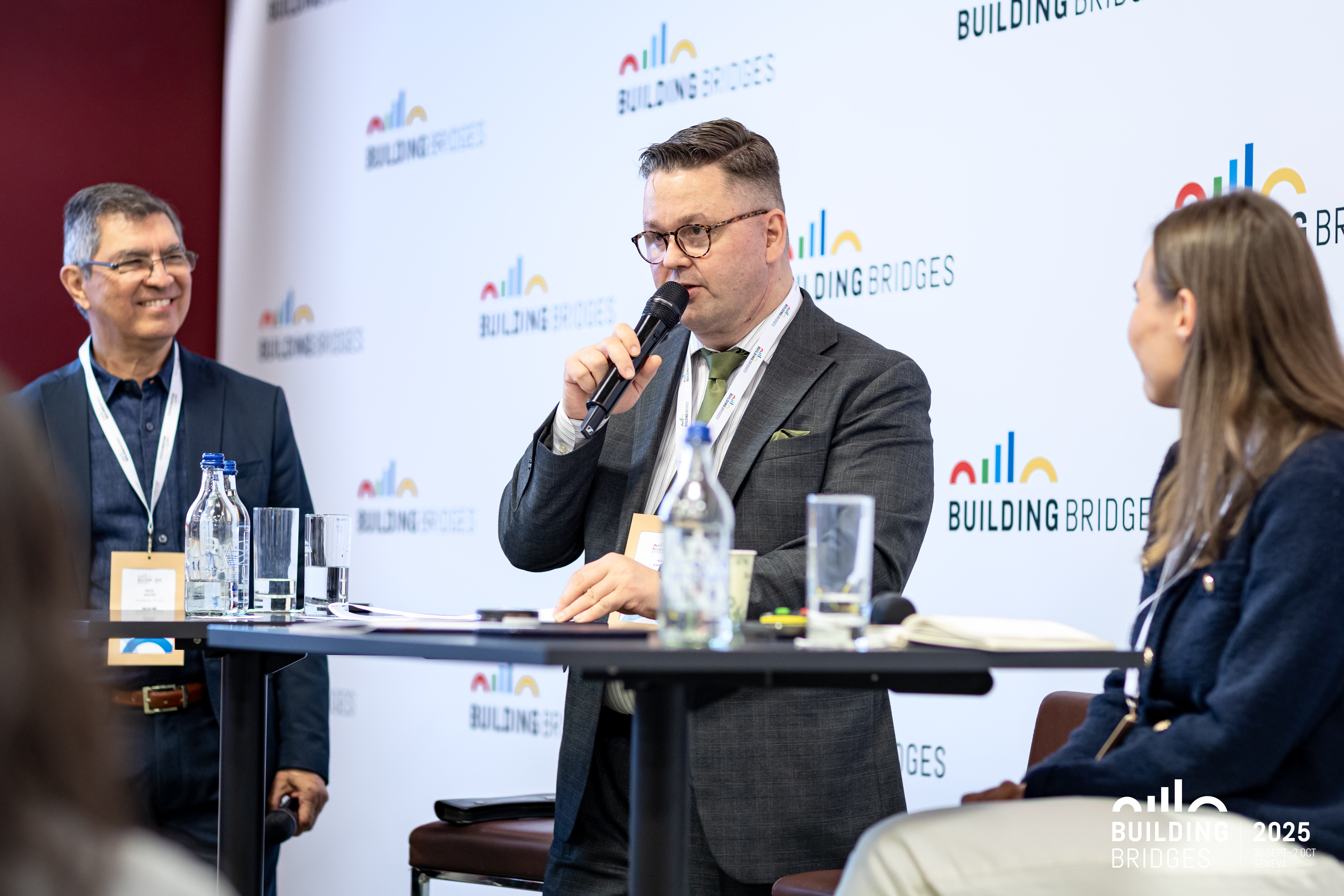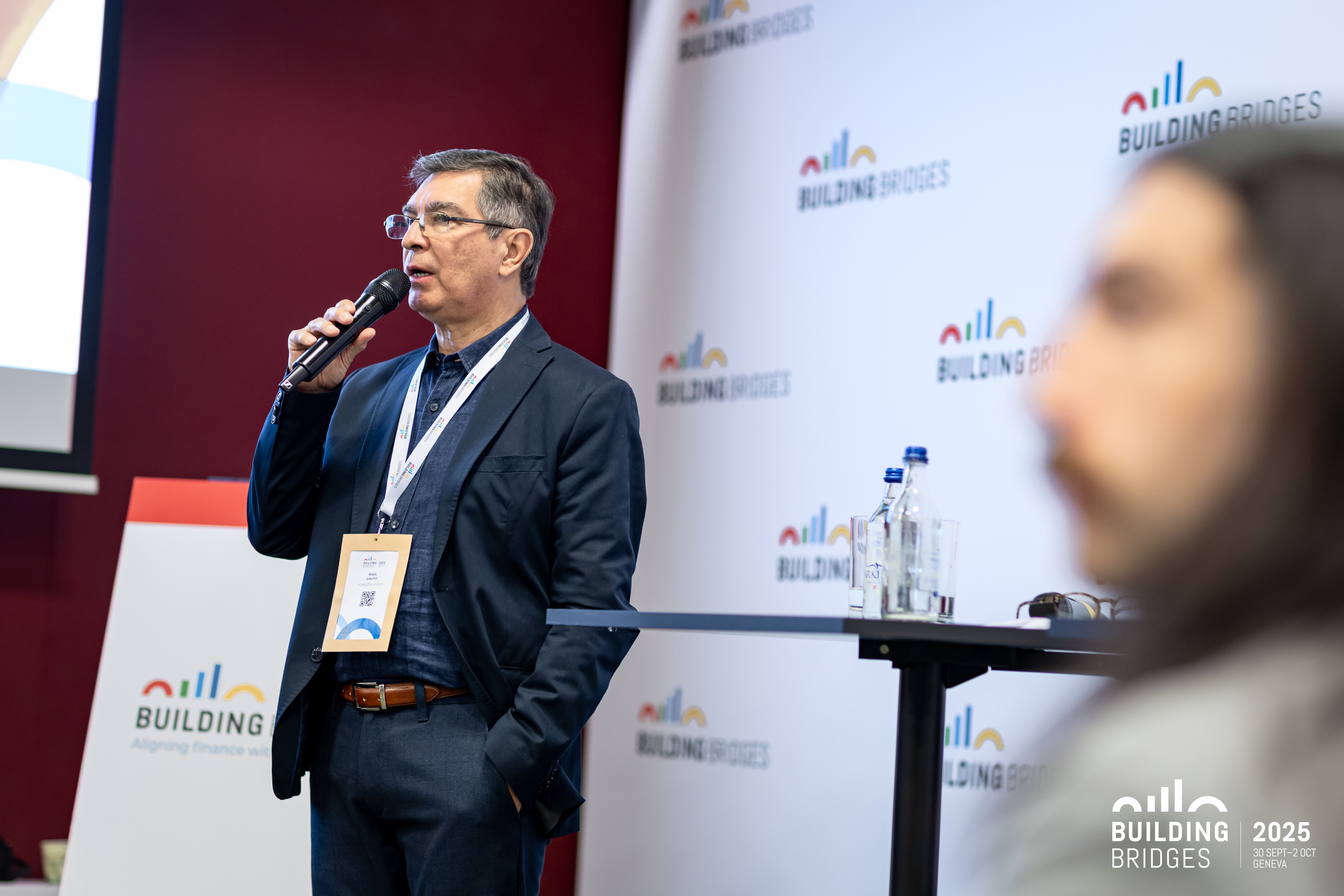
At the Building Bridges Conference in Geneva, we moderated a panel on how global capital can accelerate sustainable forestry growth in emerging markets. The session — “Forestry for Impact: Connecting Global Capital with Emerging Market Opportunity” — featured Kari Kangas, Director of Forest Investments at United Bankers (Finland), and Raúl Gauto, CEO & President of Forestal Sylvis (Paraguay).
The discussion bridged perspectives between a European investor and a Latin American forestry operator, exploring how forestry can serve simultaneously as an asset class, a nature-based solution, and a driver of development.
Forestry has increasingly become a strategic allocation for long-term investors seeking both steady returns and measurable impact. At United Bankers, it forms part of a broader real-assets strategy, providing predictable biological growth, inflation protection, and diversification benefits.
Kangas explained that the firm now manages more than 150,000 hectares of forest in Finland, representing over 3,000 individual properties. While timber revenues remain the foundation, the investment case also includes carbon sequestration and biodiversity management, which are becoming increasingly relevant to institutional investors with climate targets.
For United Bankers, the starting point for any forestry investment, whether in Finland or abroad, is governance and data. Clear ownership rights, reliable forest inventories, and functioning local timber markets are essential prerequisites. Without these, he noted, investors simply will not proceed.
He emphasized that credibility is built through verification and consistency: carbon and biodiversity indicators should be disclosed alongside financial returns. This consistency of reporting builds the trust required for institutional capital to enter new markets.

From the operator’s side, Raúl Gauto outlined how Forestal Sylvis has built a sustainable forestry business in Paraguay over the past 15 years. The company now manages more than 5,000 hectares of eucalyptus plantations using a silvopastoral model that integrates tree planting with cattle grazing.
In this system, trees are planted in wide rows to allow grass to grow between them, improving soil health and enabling livestock to graze beneath the canopy. Over each 10-year rotation, degraded land becomes fertile again through organic matter accumulation and improved microbiology.
Gauto explained that Paraguay offers unique advantages: fast tree growth rates, favorable climate conditions, and an abundance of degraded or underutilized land available for reforestation.
The company’s approach goes beyond economic returns. Forestal Sylvis shows clear environmental and social impacts. This is amplfied through independent certification, including FSC, B Corporation, and partnerships with Fundación Paraguaya,.They also monitor community well-being using the Poverty Stoplight tool. These measures has translated into tangible results, such as a 95% reduction in fire risk after introducing new waste management practices in surrounding communities.
Gauto also highlighted that the company operates within a supportive national framework. Paraguay’s government actively encourages reforestation, recognizing its potential to create rural jobs and export value. The country’s low tax rates and straightforward repatriation policies further contribute to its attractiveness for investors.

Both speakers underscored that scaling forestry investment requires bridging the gap between operational realities and institutional requirements.
Kangas noted that while Paraguay’s governance and ownership systems are relatively strong, further improvements in data transparency, land registries, and oversight will be critical to attracting more global capital. Reliable measurement systems, consistent inventory data, and clear reporting standards give investors confidence to price risk accurately.
He also stressed that reporting impact separately from financial performance is no longer sufficient. For investors, impact indicators, such as carbon sequestration or biodiversity metrics, need to be integrated into overall cash flow models. “Any investor understands cash flow,” he said, suggesting that clarity and comparability are key to making impact tangible.
From the Paraguayan perspective, Gauto pointed out that one of the biggest challenges for Latin America’s forestry sector is perception. The main reasons, he explained, are perceptions of institutional risk and the limited availability of data. Strengthening national forest services, developing insurance mechanisms, and improving education and language skills in the forestry workforce are practical steps toward addressing these barriers.
Finland’s forestry model provides a useful point of comparison. With more than 650,000 private forest owners, clear property rights, and a long tradition of forest management, the country represents a mature, highly structured market. Paraguay, by contrast, is at an earlier stage - but that also means higher potential returns.
Kangas observed that from an investor’s “helicopter view,” Paraguay stands out for its political stability and private ownership culture, both of which are rare in the region. The existence of FSC-certified plantations demonstrates that international standards can be implemented effectively on the ground.
He pointed to areas where further progress would unlock larger flows of institutional capital: improving land registry transparency, maintaining consistent oversight, and building stronger data systems. “With those improvements,” he said, “even more institutional capital can flow to Paraguay with confidence.”
Gauto agreed, adding that large-scale investments illustrate the sector’s momentum. These initiatives are emerging elsewhere in Paraguay, signaling growing investor confidence and industrial capacity.
The panel also discussed how emerging carbon markets are shaping forestry investment models. Paraguay’s new national carbon framework opens the possibility of verified carbon and biodiversity credits as complementary revenue streams alongside timber.
For United Bankers, carbon is not yet a monetized income line, but its measurement is already standard practice. Kangas described a three-part structure: timber provides the stable financial base, biodiversity ensures the license to operate, and carbon represents the near-term growth opportunity. However, he cautioned that credibility depends on third-party verification and transparent data.
Gauto added that for operators like Forestal Sylvis, carbon certification is becoming part of the next growth phase. The company is pursuing verification through programs such as VERRA.
The conversation reflected a broader theme across Building Bridges 2025: that credible carbon markets and transparent reporting frameworks are key to connecting sustainable finance with real-world outcomes.
The discussion illustrated how forestry can act as a bridge, not only between nature and finance, but also between continents and mindsets. Finland’s century-long experience shows how structured governance and stewardship can create long-term value; Paraguay’s rapid growth highlights the potential when those principles meet emerging-market dynamism.
Key insights included: